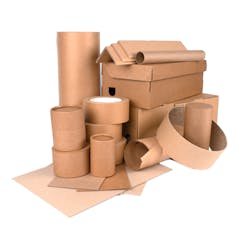E-Commerce Faces Packaging Issues Due to COVID-19
Consumer packaged goods (CPG) packaging has long played a critical role in the experience and utility of consumer products – but now, packaging and materials companies must meet a broader set of requirements as consumers demand sustainability and adopt new e-commerce, business models. It’s crucial to examine this now for two main reasons, according to new data from Lux Research.
The sector is under an unprecedented level of scrutiny. Issues of sustainability – particularly plastic waste, but also greenhouse gas emissions, land use, and water use. These are now major pain points as new regulations and consumer pressure force change. Furthermore, the COVID-19 pandemic accelerated a transition toward e-commerce that was already underway for many goods, achieving a decade’s worth of growth in 2020 alone.
Lux’s new report, “E-commerce’s Impact on CPG Packaging,” examines how e-commerce might reshape packaging to meet product, sustainability, and consumer goals and identifies opportunities for innovation. The explosion of direct-to-consumer e-commerce has created a rising wave of e-commerce native packaging. Freed from the shackles of brick-and-mortar retail, brands have begun to develop a new packaging design language specific to e-commerce. As e-commerce is now capturing the majority of retail sales growth, catering to this market will be crucial for material and packaging companies.
“These dynamics create two main opportunities for innovation: novel materials that can serve to create brand experiences with as little material as possible for the fast-growing e-commerce native space, and incremental enhancements for the much larger established e-commerce platforms,” explains Anthony Schiavo, research director at Lux Research and lead author of the report. “As these innovations come to market, they will begin to filter out into the broader packaging design landscape. E-commerce packaging will become a proving ground for materials and business model approaches that will drive the packaging space as a whole.”
The market for packaging materials is still dominated by brick-and-mortar supply chain packaging, as both conventional and local delivery approaches use these materials. However, most of the growth in retail sales is now coming in e-commerce, and the e-commerce availability and e-commerce native approaches use far more packaging than the conventional supply chain. Thus, packaging material companies need strategies for these routes to continue to grow.
E-commerce is uniquely positioned as ubiquitous yet rapidly evolving and, in many ways, immature. The evolving design of e-commerce native packaging will affect all other types of packaging. For materials companies, there is a huge opportunity in the large yet relatively unexplored design space of e-commerce packaging
